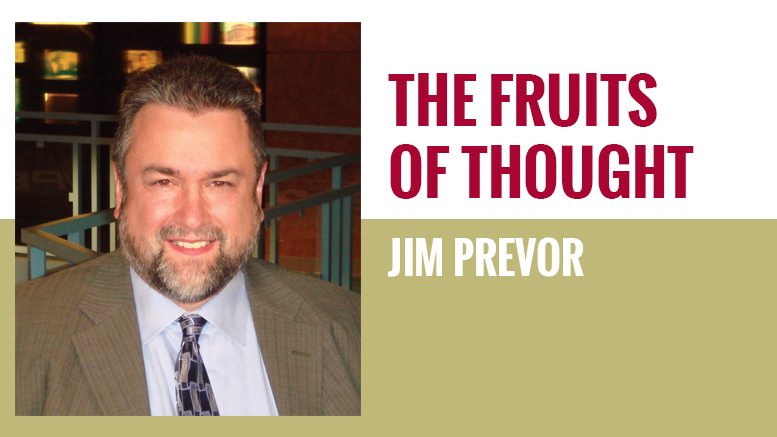Managing Shrink In Today’s Retail Environment
February 1, 2020 | 4 min to read
In the produce retail industry, the emphasis should be on maximizing sales rather than merely reducing shrink, as highlighted by Sydney Prevor's wisdom. Retailers often cut back on unique items to minimize waste, which ultimately harms sales and profits, especially against rising competition from discount stores like Aldi, Lidl, and Walmart. To attract affluent consumers, upscale retailers must prioritize a diverse assortment and immersive shopping experiences, knowing that higher shrink can lead to greater customer satisfaction and loyalty.

Originally printed in the February 2020 issue of Produce Business.
“The goal is to sell produce, not minimize shrink.” These words still echo in my mind as admonishments from my uncle, Sydney Prevor, during my teenage stint working in La Cosecha, a retail fruit store my family had opened in Puerto Rico.

We displayed the mushrooms in 3-lb baskets, and, during prime shopping hours, the consumers would line up. They saw the fresh white button mushrooms, and I would open basket after basket, many times five or six, selling 15 lbs or more. Then the demand would be sated, the crowd would dissipate, and I would put a 3-lb basket or two in the cooler.
The mushrooms might sit in the cooler for hours, getting discolored, before I brought out new baskets of mushrooms, and the shoppers got excited and the cycle began again. Looking back, it is clear I was too worried about shrink. We probably should have focused on maximizing sales, even if we had to charge more to compensate for some shrink.
The real problem with shrink is that this line item is on the financials, and top retail executives tend to fixate on it, especially if times are tough. These executives usually have no idea how to actually sell more produce, but they see this large number and can easily imagine ways to reduce shrink. They demand that the department buy less produce. They incentivize staff to reduce shrink by offering bonuses and similar enticements.
They may even succeed in reducing shrink — the bananas are bought greener, the specialty items are not ordered, promotions are switched to “hardware” items, such as potatoes and onions, or the volume purchased is cut down. In the end, shrink may be reduced, but so are overall sales and profits.
This has always been true, but with the growth of online sales and the growth of hard discounters, it is an increasing problem at traditional supermarkets. Consumers who choose to purchase online and at other types of retail stores are going to be looking for something special. Supermarkets are not going to out-discount the hard discounters, but they can create an environment where shoppers prefer to be. They can create an environment of immersive retailing.
I remember getting a tour of a newly opened Vons Pavilions store, back in the 1990’s by Dick Spezzano, then vice president of produce and floral for Vons. The store was a converted department store in Garden Grove. There was a fresh juice and melon bar, and the floral department had a floral arranger on staff. There was a complete assortment of specialty produce items, and Dick was well aware that many of them would be thrown out.
The price for being more distinctive in produce will be more, not less, shrink.
As the Vons website described its store:
Mother Nature’s best overflows in our produce department, where you’ll often find 12 types of tomatoes, 15 varieties of apples, 14 types of melons and the purest organic fruits and vegetables.
Today, stores have been pulling back on assortment, attempting to compete on price with hard discounters, warehouse clubs and online portals. This will ultimately prove to be a mistake.
Of course, price does matter — for many consumers, overwhelmingly so. Most likely, these consumers will wind up shopping at limited assortment hard discount stores. Aldi and Lidl are rolling out across the country and will probably wind up exceeding 10% of the U.S. grocery market, as they have in the United Kingdom. Add in Walmart, and a good 35% or more of the U.S. grocery market will be discount concepts.
It is unlikely the rest of the retailers will succeed by trying to be just as good a discounter.
It is fine to reduce shrink by using better technology, getting more frequent deliveries and targeting products consumers want to buy. But, for upscale retailers, the goal can never be to reduce shrink. The goal always has to be focused on creating a shopping experience that affluent consumers want to engage in.
Even if one knows the specialty produce doesn’t sell well, it does not mean it should be removed. The question comes down to whether the variety of specialties is attracting the kind of consumer who wants to spend big bucks on premium olive oils and vinegars, not whether the specialty item makes a profit in its own right.
The explosion of proprietary varieties in apples, grapes, tree fruits and berries is just starting to change produce retailing. Just as a fine wine store has endless variety, we can expect upscale produce retailers will be compelled to have specialty grapes, tree fruit, berries, melons and more.
We already see how Honeycrisp apples and Cotton Candy grapes capture premium demand and distinguish some stores from others, but just as wine stores don’t only have wildly distinctive flavors, so produce retailers will soon feel they must always have many subtly different flavors.
The price for being more distinctive in produce will be more, not less, shrink. But also more satisfied customers for the upscale supermarket of tomorrow.
15 of 16 article in Produce Business February 2020

